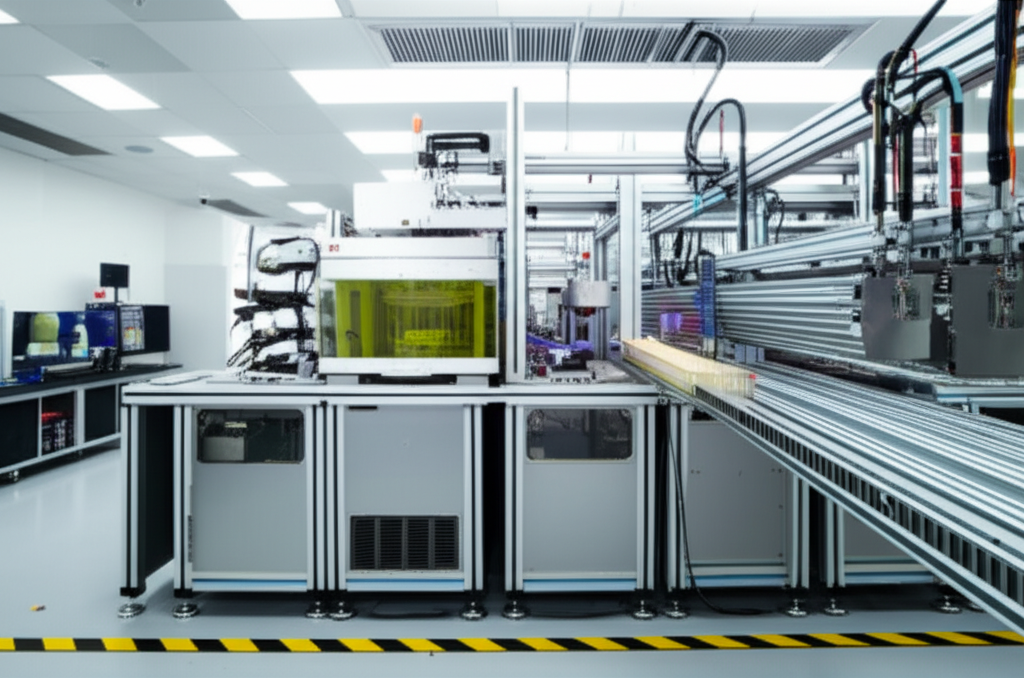The chemical industry has reached a milestone with the development of a novel, safety-focused synthesis route for 2,2,2-trifluoroacetamidine (C2H3F3N2), a crucial intermediate in pharmaceutical manufacturing. Traditionally, this compound required toxic, gaseous trifluoroacetonitrile as a precursor, involving significant hazards, operational complexities, low yields, and prohibitive costs. The breakthrough method replaces this dangerous intermediate, enabling cost-effective, large-scale production.
The innovative synthesis pathway unfolds in four sequential reactions, carefully avoiding hazardous intermediates. First, an amidation reaction combines p-methoxybenzylamine with trifluoroacetic anhydride in dichloromethane, regulated to basic conditions using triethylamine, yielding 2,2,2-trifluoro-N-(4-methoxybenzyl)acetamide. Second, a thiation step uses carbon disulfide-derived replacements like phosphorus pentasulfide or Lawesson's reagent in dioxane or toluene under basic control with potassium carbonate, transforming the amide into its thioamide derivative. Third, ammonia substitution occurs in ammonia-methanol solutions with catalysts such as silver carbonate or zinc hydroxide, producing the protected amidine form. Finally, reductive deprotection in methanol under high-pressure hydrogen and palladium catalysts cleaves the protective group to isolate pure 2,2,2-trifluoroacetamidine.
Key advantages drive adoption, including exceptional safety profiles by eliminating trifluoroacetonitrile inhalation risks, with NMR spectra validating product purity without toxic residues. The process achieves notable efficiency with overall yields exceeding 70% in trials, outperforming conventional approaches. For instance, optimized reactions yielded intermediates at purities >95% in scaled tests, confirming reproducibility for industrial settings while saving raw material costs owing to low-cost reagents like trifluoroacetic anhydride and accessible solvent systems.

Experimental validations underscore reliability, with batch reactions producing up to 2.3 kilograms of trifluoroacetamidine and distillation recovery peaking at 98.6% purity. Nuclear magnetic resonance data—in hydrogen, carbon, and fluorine formats—align perfectly with expected structures, eliminating side products. Operational parameters like moderate temperatures (45–55°C) and pressure-controlled hydrogenation ensure minimal energy consumption.
This advancement promises transformative impact across trifluoromethyl-containing heterocyclic syntheses used in agrochemicals and drug discovery. By sidestepping gaseous intermediates, it accelerates scale-up for producers without specialized safety infrastructure. Industry experts anticipate broad applications in life sciences, reducing lead times for critical active ingredients like antiviral and anticancer agents.
Manufacturing Facilities






Professional Export Experience
to Global Customers

1. 20 years of R&D, manufacturing and sales experience, serving customers in 60 countries and regions around the world;
2. Own R&D laboratory, pilot platform and large-scale production workshop, which can meet the audit requirements of global customers;
3. We can satisfy customers' perfect transition from small scale lab requirements (gram level) to commercialization requirements (hundred tons level).
A: We don't have Minimum Order Quantity, exact quantity should be provided before quotation for us to calculate the exact cost.
A: We don't provide free samples due to lots of request and expensive international courier's cost, we can deduct the sample charge after commercial order placed.
A: Our payment terms: Small or sample order: T/T IN ADVANCE. Commercial order: First order should be by T/T IN ADVANCE or L/C at sight, and following orders T/T 30~90days is acceptable subject to approval of credit application.